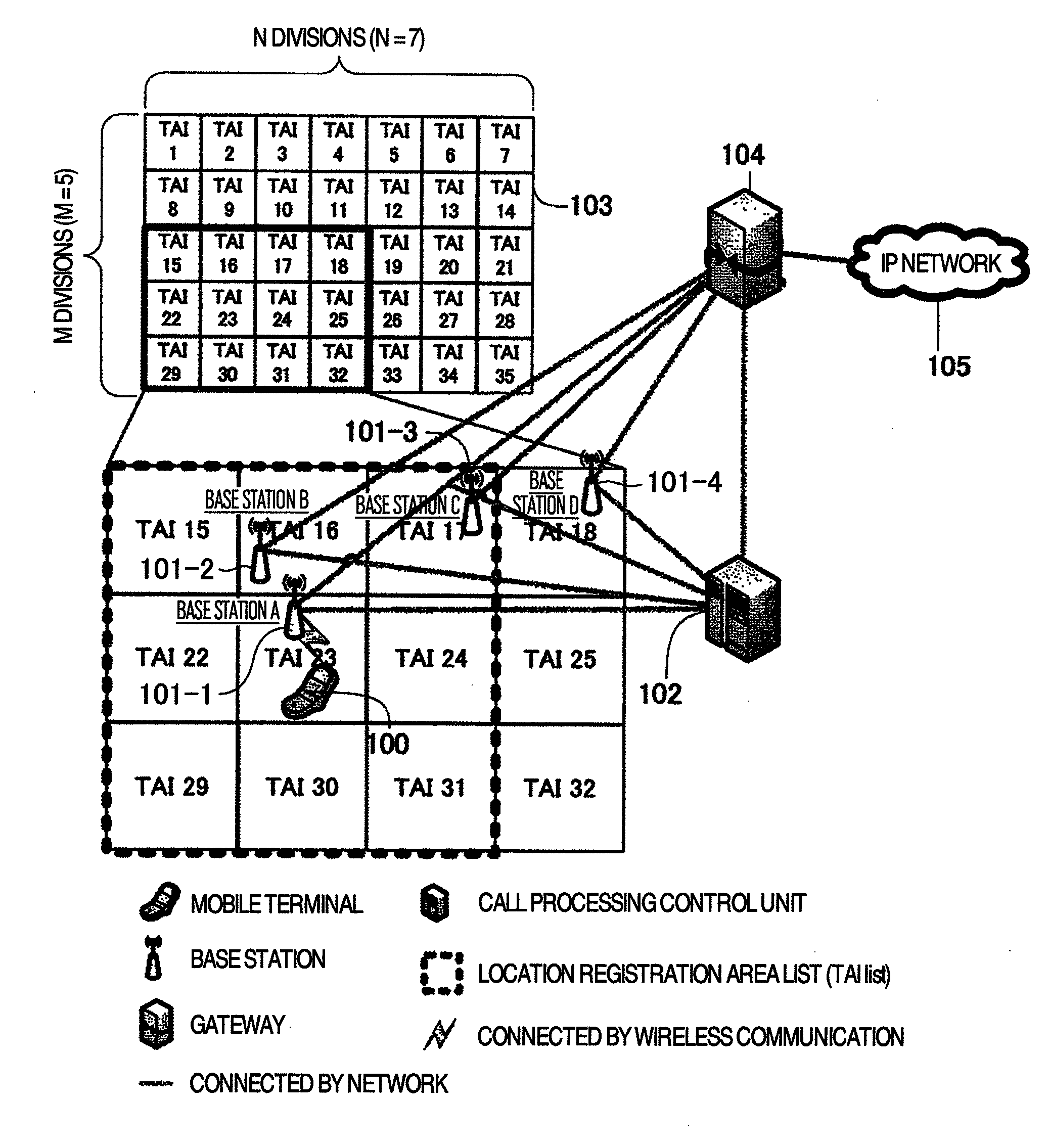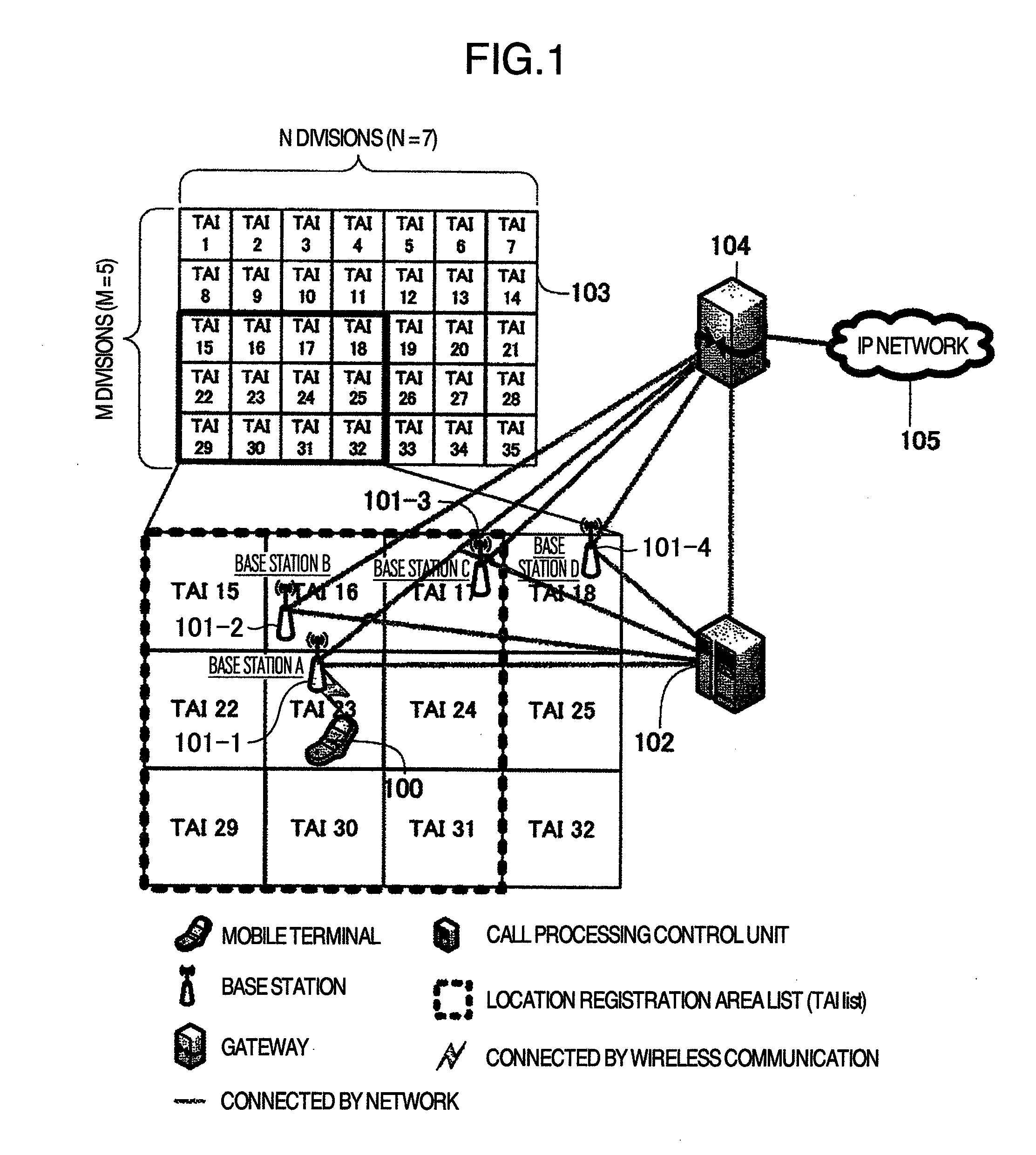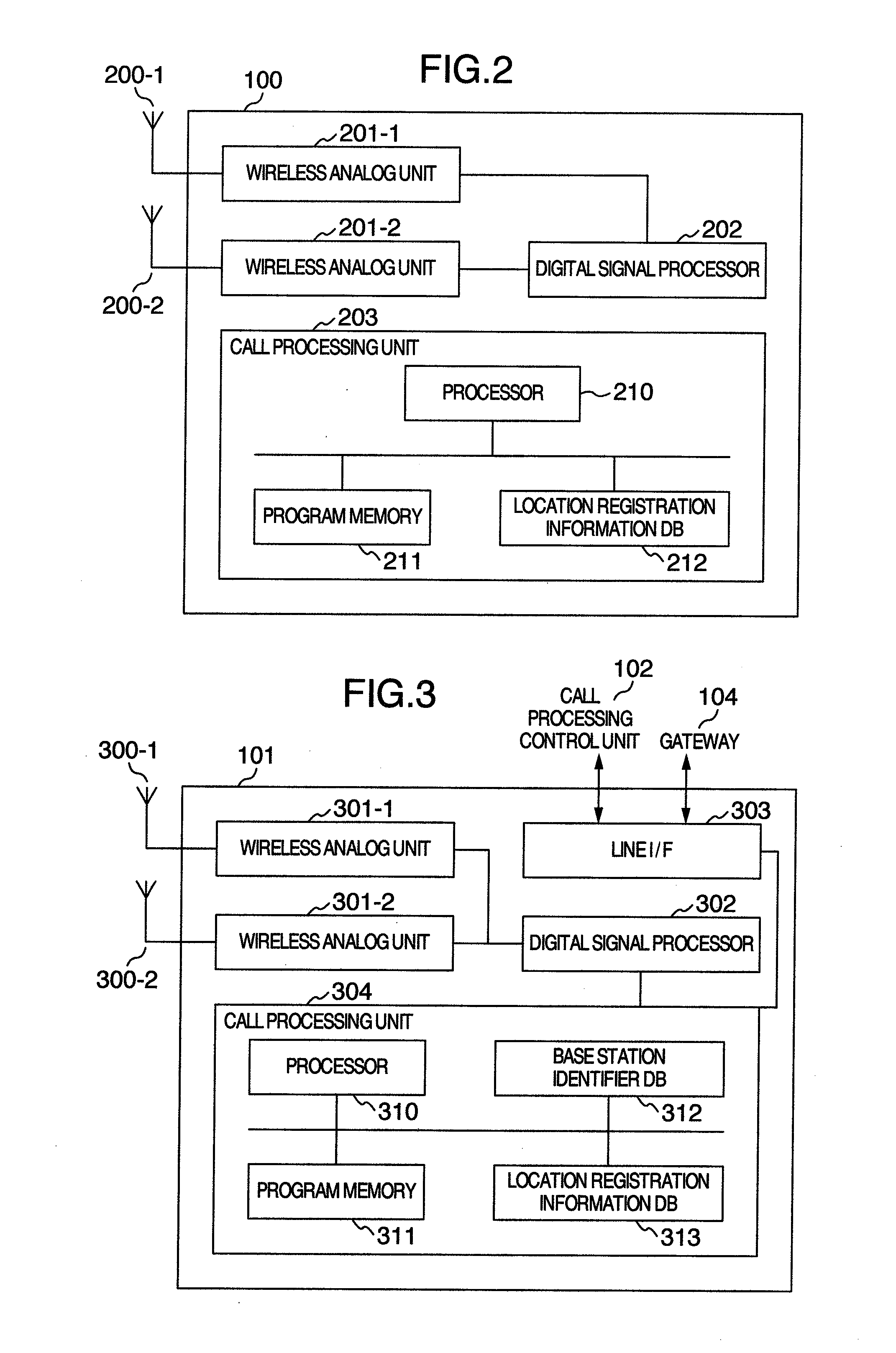[0007]In the case where the TA management method according to the
conventional technique in which a TA is divided into a plurality of areas each having a predetermined size is used for the call processing control unit, it is easily estimated that the same TAI list is allocated to a plurality of different mobile terminals moving in a
bus or an electric tram. A multiplicity of mobile terminals holding the same TAI list, which cross the
boundary line of the areas corresponding to the TAI list while moving in a
bus or an electric tram, for example, start the location registration process at the same time with a
base station located in the vicinity of the particular boundary line. The resulting concentration of the location registration process on the base
station associated with the boundary line would locally impose a heavy burden on the wireless resources due to the location registration process. In order to suppress the consumption of local wireless resources due to the location registration process, a method is required to prevent the boundary line of the areas from being crossed at the same time by the simultaneous movement of a multiplicity of users. This problem is solved by allocating different TAI lists to different mobile terminals. Even in the method to reduce the local consumption of the wireless resources by allocating different TAI lists to different mobile terminals, however, the TAI list allocation which causes many cases of location registration in different areas cannot reduce the consumption of the wireless resources in the particular areas as a whole. A TAI list
allocation method has to be conceived to reduce the local consumption of wireless resources by the location registration process while at the same time suppressing the number of times the location registration is made by the mobile terminals.
[0011]With regard to the paging area, JP-A-2006-211335 proposes a method using the GPS (
Global Positioning System) information acquired by the GPS included in the mobile terminal as a means for efficiently specifying the paging area to be covered at the time of a call. In this case, the GPS position information acquired from the mobile terminal is managed by a central position
information management unit. Further, by managing the history of the position information of the mobile terminal, the paging area is specified based on the latest position information thus managed. In addition to the location registration area information, therefore, the GPS position information can be easily used to specify the paging area for an improved paging
process efficiency.
[0012]Further, the
moving speed and acceleration of the mobile terminal are calculated as the travel condition thereof using the history of the position information of the mobile terminal, and by thus increasing or decreasing the paging area, the efficiency of the wireless
resource consumption for paging is improved. In the method of determining the paging area by managing the history of the mobile terminal, however, the travel history is required to be managed for each mobile terminal, and therefore, the paging area cannot be easily managed by the call processing control unit. Also, the call processing control unit is required to prepare a history management data base for each mobile terminal, thereby posing the cost problem.
[0017]The mobile terminal reciprocating between two destinations (the home and the working place, for example) tends to follow the same
route. The
route through which the mobile terminal has passed is held in the call processing control unit as a travel pattern and the TAI list corresponding to this
route is allocated to the mobile terminal. Then, in the case where the mobile terminal follows the same route on the next occasion, the location registration process is not executed, and therefore, the consumption of the wireless resources which otherwise might be caused by the location registration process is reduced. According to the method of allocating the TAI list along the travel pattern of the mobile terminal, a limited location registration area is selected for each mobile terminal. Since the TAIs of the areas along the travel route are selected as the TAI list for each mobile terminal, the location registration area is configured to limit the location of the mobile terminal more easily at the time of starting the paging process to the mobile terminal. Also, in the case where the location registration area configuration is used for setting the paging area, the paging request can be issued to the base
station in the travel pattern of the mobile terminal by using the TAI list allocated to the mobile terminal for setting the paging area. Therefore, the paging area can be effectively reduced.[In the Case where the Call
Processing Control Unit Cannot Recognize the Mobile Terminal Travel Pattern]
[0022]Also, since the TAI list is allocated in accordance with the travel pattern of the mobile terminal, a different TAI list can be held for a different mobile terminal. With a different TAI list held for a different mobile terminal, a plurality of mobile terminals in tram or bus simultaneously cross the boundary line of the location registration area less frequently, and the load on the network is reduced. Further, the travel pattern of the mobile terminal is reflected in the TAI list by the location registration process described above, and therefore, by using it to set the paging area, the paging area can be determined effectively.
 Login to View More
Login to View More  Login to View More
Login to View More 


